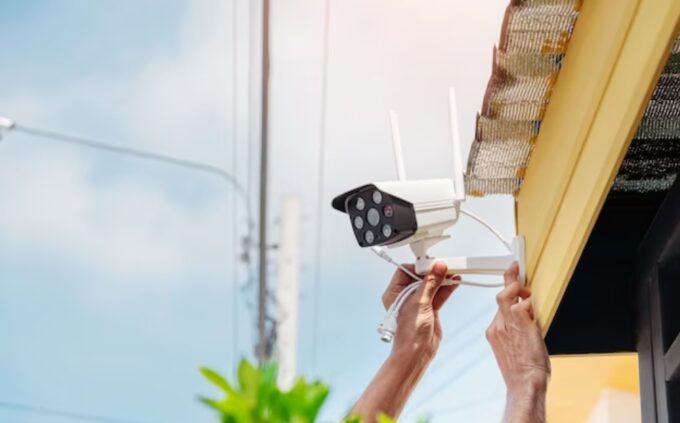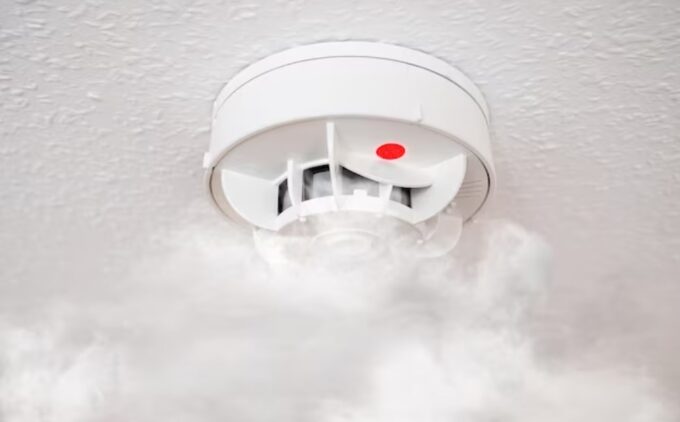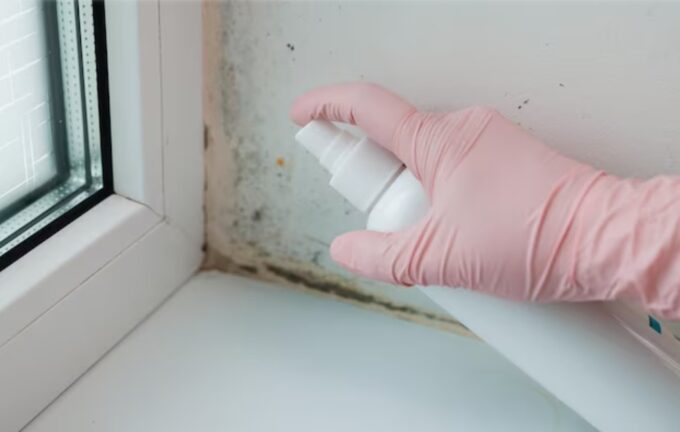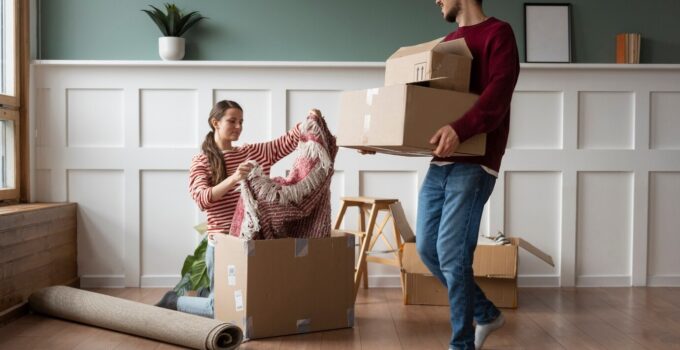There are several reasons why people opt to move to a different state. Depending on what reasons you may have for making such a decision, moving interstate can be exciting and challenging or extra challenging. However, this does not mean that you can’t turn it into a positive experience.
Knowing that the moving process can be challenging, some people opt to hire professional removalists to do the work for them. Before making any final decisions, be sure to check the website of movers in your area to get more details about their services.
Aside from relocating your belongings, several removalists offer packing and unpacking services that can be very helpful, especially when you’re moving with kids. If this is not an option for you, a DIY move with the help of family and friends is the way to go. Getting additional helping hands will allow you to finish the tasks faster and start settling into your new home sooner.
The process of settling into a new space involves much more than simply unpacking boxes; it requires careful planning, attention to detail, and a willingness to embrace change. Below are some tips to help ease the transition and make the process of settling into your new home after an interstate move smoother.
Check Security and Safety Features

Source: freepik.com
Upon arriving at your new home, the first and foremost concern should be ensuring the security and safety of your family. Take the time to thoroughly inspect the home’s security features, including locks on doors and windows, smoke detectors, and any other safety measures in place. If there are any concerns, address them promptly to create a secure living environment.
Clean the Home Before Unpacking
Before delving into the unpacking process, it’s advisable to give your new home a thorough cleaning. Even if the previous owners or tenants left the house in good condition, a deep clean will help you start with a fresh slate. This includes cleaning floors, surfaces, and any appliances that come with the house. A clean living space provides a sense of ownership and comfort.
Unpack Essential Items First
When it comes to unpacking, prioritise essential items. These may include basic kitchenware, bedding, toiletries, and important documents. Having these items readily available will make the first few days in your new home more comfortable. Consider creating a “first-night” box or bag containing necessities like medications, important paperwork, and a change of clothes.
Organise All Moving-Related Paperwork

Source: freepik.com
Moving inevitably generates a significant amount of paperwork. Ensure that all important documents related to the move, such as contracts, inventory lists, and receipts, are organised and easily accessible. This will come in handy for any post-move tasks, including potential claims or adjustments.
Unpack the Rest of Your Belongings
Once the essential items are unpacked and the immediate needs are met, gradually proceed with unpacking the rest of your belongings. Take your time to organise each room thoughtfully, keeping functionality and aesthetics in mind. Consider decluttering as you unpack to avoid unnecessary accumulation of items.
Create a Comfortable and Safe Space for The Family
As you settle into your new home, focus on creating a comfortable and safe space for your family. Arrange furniture in a way that promotes a positive flow and ensures the safety of children and pets. Pay attention to details like lighting, which can significantly impact the ambience of a room.
Settling Into Your New Home After an Interstate Move

Source: freepik.com
Getting to know your new neighbourhood is crucial for a smooth transition. Take some time to explore the surroundings, identify essential amenities like grocery stores, hospitals, and schools, and familiarise yourself with public transportation options. Understanding the layout of your new community will help you feel more at home.
Attend Community Events and Meet New People
One of the best ways to integrate into your new community is by attending local events and engaging with neighbours. Many communities host welcome events or neighbourhood gatherings, providing an excellent opportunity to meet new people and establish connections. Joining clubs or groups with shared interests can also help you build a sense of community.
Try the Local Cuisine and Immerse in Local Culture
Exploring the local culture is an integral part of settling into a new area. Try the local cuisine, visit nearby landmarks, and attend cultural events or festivals. Embracing the uniqueness of your new location will not only broaden your horizons but also make you feel more connected to your surroundings.
Stay Connected with Loved Ones

Source: freepik.com
While adapting to a new environment, it’s essential to maintain connections with loved ones. Use technology to stay in touch with friends and family, especially if the move has physically distanced you from your support network. Regular calls, video chats, or even planning visits can help bridge the gap and provide emotional support during the settling-in process.
Safety Checks and Tasks to Perform Immediately upon Arriving
Inspect Security Features
- Check all entry points (doors, windows, sliding glass doors) for secure locks. Consider upgrading or changing locks for added security.
- Verify that all exterior lighting is working, especially around entrances and pathways.
- Test the alarm system, if installed, and update the security code if needed.
Utilities and Appliances
- Locate and test the circuit breaker box. Label each circuit to easily identify them in case of an emergency.
- Test smoke detectors and carbon monoxide detectors. Replace batteries if necessary.
- Locate and familiarise yourself with the main water shut-off valve.
- Check the functionality of major appliances, such as the stove, oven, refrigerator, and dishwasher.
Emergency Exits
- Identify all emergency exits in the home, including doors and windows. Ensure they open easily.
- Familiarise yourself with the escape routes, especially if you are in a multi-story home.
Fire Safety

Source: freepik.com
- Install fire extinguishers in key areas of the house, such as the kitchen and nearby bedrooms.
- Have an emergency evacuation plan, especially if you have family members or roommates. Practice fire drills regularly.
Childproofing
- If you have children or expect visitors with children, childproof the home. Secure heavy furniture, cover electrical outlets, and install safety gates if necessary.
Pest Control
- Check for signs of pests such as rodents, insects, or termites. Consider hiring a pest control professional for an inspection and treatment if needed.
Inspect Plumbing
- Look for any leaks under sinks, around toilets, or in the basement. Address leaks promptly to prevent water damage.
- Test water pressure in faucets and showers. If there are issues, it may indicate plumbing problems.
Heating and Cooling Systems
- Test the heating and cooling systems to ensure they are in working order. Clean or replace filters if necessary.
Address Any Immediate Hazards
- Identify and address any immediate hazards, such as loose handrails, broken stairs, or unstable flooring.
Check for Mould and Mildew

Source: freepik.com
- Inspect bathrooms, basements, and other potentially damp areas for signs of mould or mildew. Address any issues promptly to prevent health hazards.
Verify Emergency Contacts
- Update or create a list of emergency contacts, including local emergency services, neighbours, and utility providers.
Know Your Neighbours
- Introduce yourself to neighbours and exchange contact information. They can be a valuable resource in case of emergencies or if you need local information.
Review Community Rules
- If you live in a community with specific rules or regulations, familiarise yourself with them to ensure compliance.
Install Window Coverings
- Install curtains or blinds for privacy and security. This is especially important if the previous owners left the home without window coverings.
Settling into a new home after an interstate move involves a combination of practical considerations and emotional adjustments. By following these tips and approaching the process with a positive mindset, you can turn your new house into a comfortable and welcoming home. Remember that the key to a successful transition is patience, flexibility, and a willingness to embrace the opportunities that come with change.







